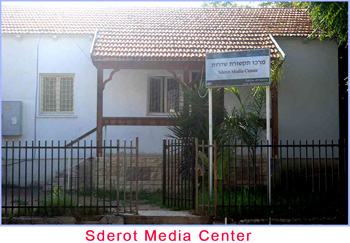Thanks to the generosity of Eagles’ Wings Ministries’ Israel Experience program, I was able to finally take a dream trip to Israel, which included camel rides, sleeping in a Bedouin tent in the Negev Desert, meeting members of the Knesset and other government officials, and visiting all the high-profile places in the country, such as Jerusalem and now-Muslim Nazareth as well as Bethlehem and Efrat in the West Bank. As beautiful as those sites are, one location and its people stand out above all others: the brave citizens of Sderot, an Israeli town that borders on the Hamas-controlled Gaza Strip.
Israel has been willing to exercise any option that doesn’t cause its destruction in an attempt for peace. When standing on the edge of Sderot and looking into the Gaza Strip, one can see the barren land where in 2005 the Israeli government forced peaceful Jewish settlers to leave behind their homes so they could be demolished in accordance with the demands of the Palestinians and international community, who failed to appreciate the economic contributions the settlement had made and could make in a tolerant, peaceful Palestinian state.
The Palestinians returned the favor by electing Hamas, who responded to this olive branch with rocket fire. Since the withdrawal from Gaza, over 7,000 rockets have been fired at Israel, including 226 since the end of Operation Cast Lead in January. Critics of the Israeli offensive into Gaza frequently state that the response was not proportional, as if not enough innocent Israelis had been killed to warrant retaliation aimed at preventing further casualties.
The focus on the relatively low number of Israeli casualties disguises the tremendous damage the rocket attacks caused, both to Palestinians and Israelis. The Palestinians need to direct their anger at Hamas’ aggression, which has resulted in unnecessary and regrettable suffering for them, and recognize that the terrorist organization is not the “liberation” force destined to save them. On the Israeli side, the psychological and economic damage is hard to comprehend.
The financially strapped residents of Sderot, members of the lower and middle classes, are forced to spend thousands of dollars on bomb shelters rather than on the food, health care, and education that they and their children deserve. Most people cannot move because housing prices have fallen so far below what they bought them for, but at the same time, the shelters for homes and schools cost equal to or greater than the buildings’ original construction. While Hamas members spend about $1,500 to build Qassam rockets to destroy those they hate, the Israelis here have to spend many times that in a desperate attempt to regain some sort of stable living, and they must do so without the international aid the Palestinians of neighboring Gaza receive.
At a playground in Sderot, we saw how a large bomb shelter was painted to resemble a caterpillar to alleviate the fear children feel when the alarm goes off after a rocket has been detected, warning them they have only 15 seconds to find safety. One study found that one-third of all children in Sderot suffer from post-traumatic stress disorder and 75 to 94 percent suffer from symptoms of PTSD. About a third of the population as a whole has anxiety disorders. Jacob Shrybman of the Sderot Media Center told us a story about how during one alarm, he and the other customers at a restaurant gathered at the center for protection, including a mother and her son who was around two years old. The child pointed at the sky during the alarm, aware of the threat of missiles before even being able to have a real conversation. Homes and other structures that were hit earlier this year remain destroyed or damaged. The victims don’t have the money to repair them and are still trying to rebuild their lives from the homes of family and friends half a year after the attack.
Everything you need to know about the current “peace process” can be found at Sderot. The Israelis live in fear of where the next Sderot will be. If the West Bank is handed over to the Palestinian Authority and Fatah’s al-Aqsa Martyrs Brigades decides that a third intifada is now a viable option, or if Hamas takes it over, then Israel will have multiple new Sderots to deal with. The fate of the Israelis living on these new borders will have been surrendered to the hands of Fatah or Hamas.
Israelis are wisely asking themselves if Sderot is a preview of what is coming to their hometown. If the international community successfully convinces Israel to again shrink its borders, then their fears will become actualized, placing additional towns at the mercy of forces armed with increasingly accurate and increasingly long-range missiles. Ben Gurion Airport will be within range of such rockets, giving those with such weaponry the power to cause cataclysmic damage to the Israeli economy with a single decision.
Whether you are in favor of ending any further handovers of territory or whether you are in favor of creating a peaceful Palestinian state side by side with Israel, every human being with any sense of morality must speak the following demand: no more Sderots.
Read the article on Pajamas Media
Ryan Mauro is the founder of WorldThreats.com and the director of intelligence at the Asymmetrical Warfare and Intelligence Center (AWIC). He’s also the national security researcher for the Christian Action Network and a published author. He can be contacted at [email protected].









